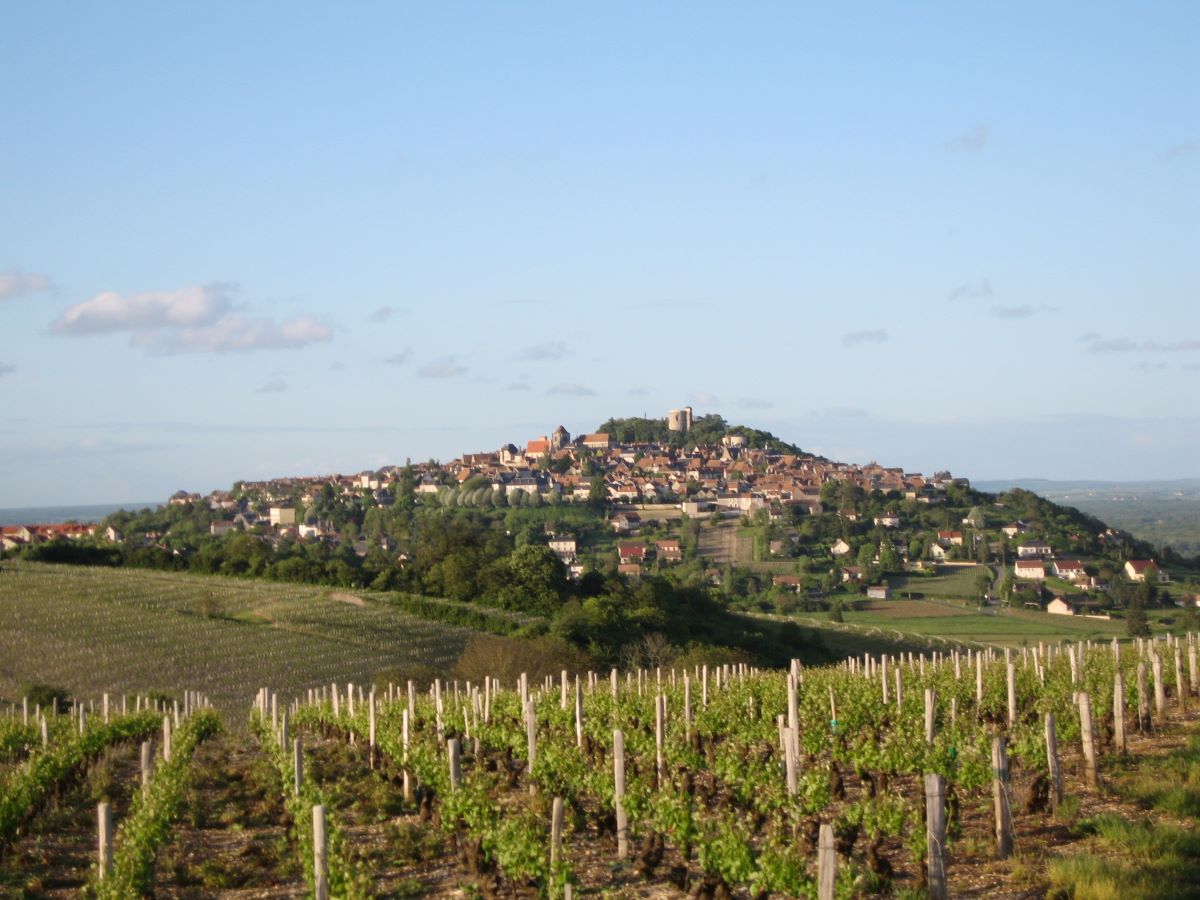Visiting the Sancerre Wine Region in France’s Loire Valley – Wine Tasting Travel Guide
Who goes to the Sancerre appellation in the Loire? Those of you who appreciate the road less traveled, with back road exploration and adventure along the way will be rewarded. Regardless of your interests beyond wine travel, you’ll have easy access to the longest river in France and all the wineries that line it. This is bucket list wine travel at any age.
In this Guide
- Sancerre Travel Tips
- Sancerre Guided Wine Tour Options
- Loire Valley Overview
- Suggested Sancerre Itinerary
- Best Wineries in Sancerre to Visit
- Top Restaurants in the Sancerre Wine Region
- Lunch and Sancerre Wine Bars
- Best Hotels in and Near Sancerre
- More Top Things to Do Near Sancerre
- More Loire Valley Wineries & Castles to Visit
- Pin This Article for Later on Pinterest
Travel Tips and Getting Around
Connecting through Paris is standard, with flights from the U.S. on Delta, Air France and many other carriers. Get yourself there and the adventure begins. France’s TGV (Train `a Grande Vitesse) or TGV inOui (updated with WiFi) trains are a great way to get to the city of Tours in Loire Valley, about two hours one way, directly from the Charles de Gaulle Airport train station. Other departures from different Paris stations such as Gare de Lyon directly into Tracy-Sancerre, about 10km from Sancerre, may also be available. Then hop a Taxi for a short trip into the village.
Renting or sharing a vehicle may be the best option depending on your itinerary. You can check current rental car rates here on Kayak. Driving is the best option once you’ve arrived in Sancerre. You’ll need to carry an International Driving Permit (available at AAA) in case you are stopped by authorities.
The best months to travel in France are generally between April to October, although off season is uncrowded and the locals will be much more accessible.
Sancerre Guided Wine Tour Options
If you’d prefer to have a wine tour operator based in Sancerre plan your visit and guide you around, Grapes and Corks offers personalized and full-day experiences throughout the region. The Sauvignon Blanc Wine Tour of Sancerre and Pouilly-Fumé is a particularly popular small group tour and includes travel in an air-conditioned vehicle, visits to at least four wineries and a gourmet lunch.
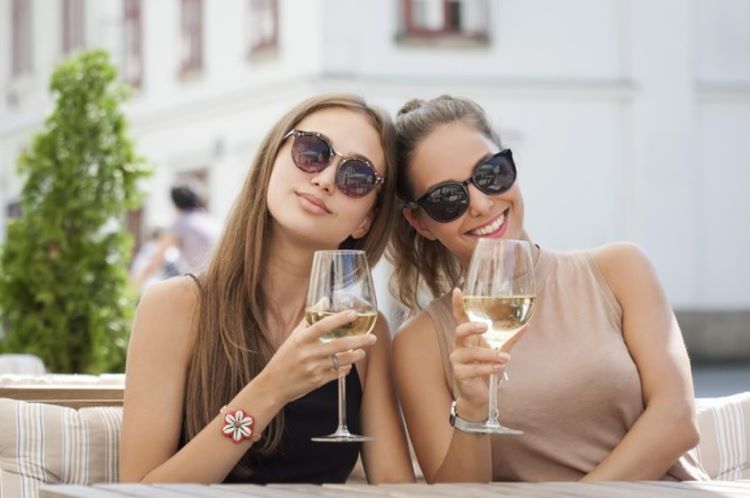
If you’d prefer a private tour of Sancerre and would like to mix up your experience that goes beyond wine, consider this this luxury tour, also offered by Grapes and Corks, which includes a comprehensive itinerary allowing for visits to two renowned wineries, a goat cheese farm, and (on select days) a visit to a traditional street market in the town of Sancerre. You’ll also stop in Charité-sur-Loire and get to explore the 12th-century Benedictine priory. Prices vary depending on group size but generally you can expect to spend around $200 per-person for a full day experience, which we believe is well-worth it.
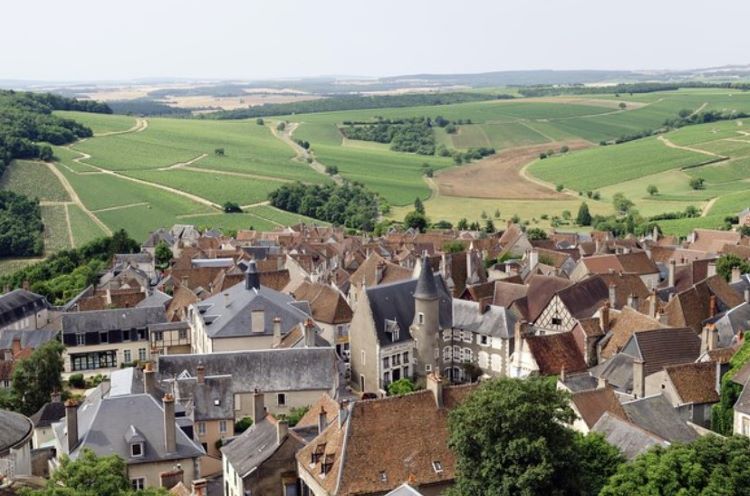
Barge Cruises are another option to consider if you prefer idling along the Loire River. European Waterways offers a unique experience aboard the Hotel Barge Renaissance, which takes you through through the vineyards of the Sancerre and Upper Loire wine region in ultimate luxury along the Canal de Briare.
There’s no obligation to book a guided tour, but these are great starting points to consider if using a tour operator makes sense for you. Many of our readers prefer a more luxury experience, and to leave the logistics and transport to local experts, especially if drinking throughout the day.
Background on the Loire Valley and the River that Runs Through It
The Loire River is considered the dividing line between north and south France. The Loire Valley is on the UNESCO World Heritage List, and is fondly referred to as “The Garden of France” for good reason. French kings and aristocratic wealth helped develop fortresses, summer hunting lodges and story book castles all along the central valley as early as the 11th and 12th to the 16th and 17th centuries. Of course, they brought their numerous nobles and mercenaries in support, as well as household help and resources including kitchen staff, chefs and larder, as well as taste testers (poison was a thing), somms (they drank the good stuff) and their wine cellars.
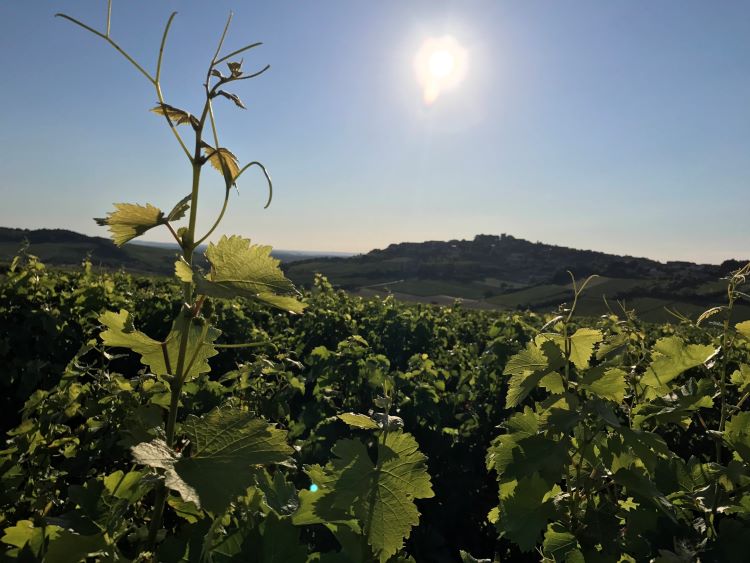
RELATED: 10 Key Facts About the Loire Valley You Should Know
For wine interested visitors, this is a must know and go area in France, with 2,000 years of winegrowing history. The Romans planted in approximately the 4th century, initially in Sancerre and the Anjou region in the Touraine. There are roughly 69 AOC (Controlled Appellations of Origin) with 7,000 producers. This rivals the total size of California wine, for instance. “La Route de Vignobles” is an 800km (500 Mile) connection between Nantes to the west and Sancerre to the east, that highlights the region’s unique “terroir” of weather, distinct soil types, aspects and vineyards. The most familiar white wines are produced in Sancerre’, Vouvray, Chinon, and Muscadet. Red wines are most well-known from the Touraine regions of Anjou-Saumur, and Bourgueil and Chinon.
This article will focus on the Sancerre Wine Region, within the broader territory called Centre-Loire. Sancerre is best known for its Sauvignon Blanc white wine. Follow the ROUTE de SANCERRE!
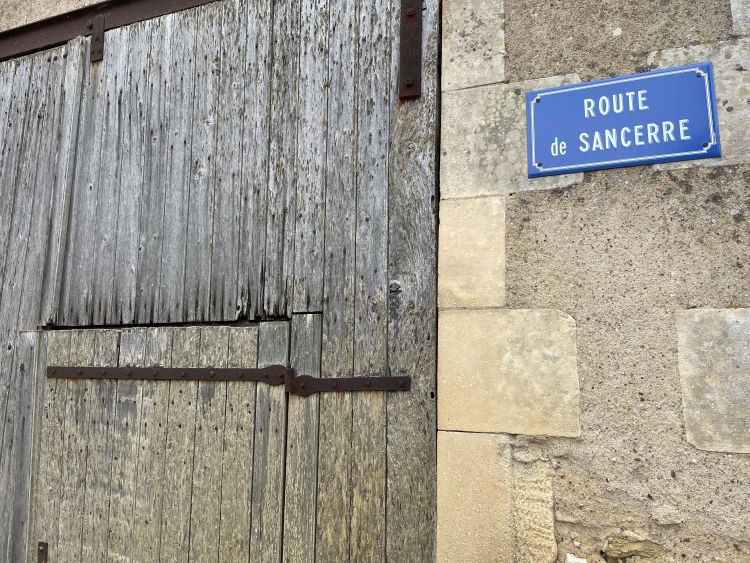
Suggested Sancerre Itinerary
I generally don’t follow suggested itineraries, but I liked how this portion of our trip played out. You may too. These Sancerre tasting room recommendations are best for those who enjoy discovery and love those smaller production “Grower-Producer” multi-generation family wineries. If you’ve yet to visit the Loire and Sancerre, the Sancerre wineries presented in this article are solid and accessible choices.
Spend some time in Tours or Amboise to get oriented when you first arrive, before heading down the Loire River. We stayed in a hotel in Amboise for two nights which was perfect. After that, we headed east to Chavignol in Sancerre (about 2-hour drive) for three days and two nights of wine touring. Otherwise, we mostly used AirBnB for the duration of our visit to other wine regions in Loire Valley. The U.S. and U.K. are big export markets for Sancerre, so you may find wines you discovered here at home.
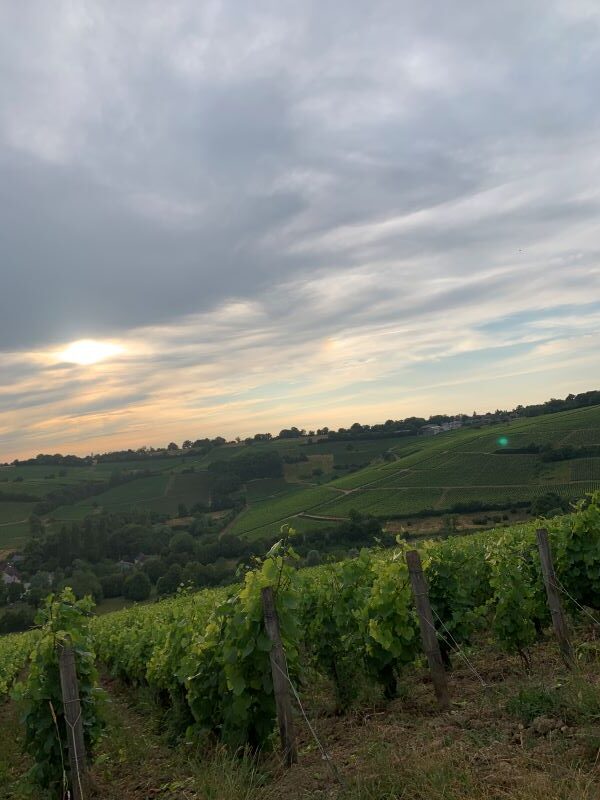
Use the Vins du Centre-Loire website for a broad overview of the larger region, and as a starting point for your wine country travel plans. You can also follow them on social media at Facebook, Instagram and YouTube. For more detailed information on the Sancerre AOP within the Centre-Loire, reference the Sancerre section of the Centre-Loire website.
You can also get more specific information direct from the Sancerre Wineries Appellation website, including winery listings, events (Foire aux Vins, Trail de Sancerre), restaurants and the like. You can track upcoming events and news by following them on Facebook, Instagram and YouTube.
Sancerre Appellation (AOP) Wine & History
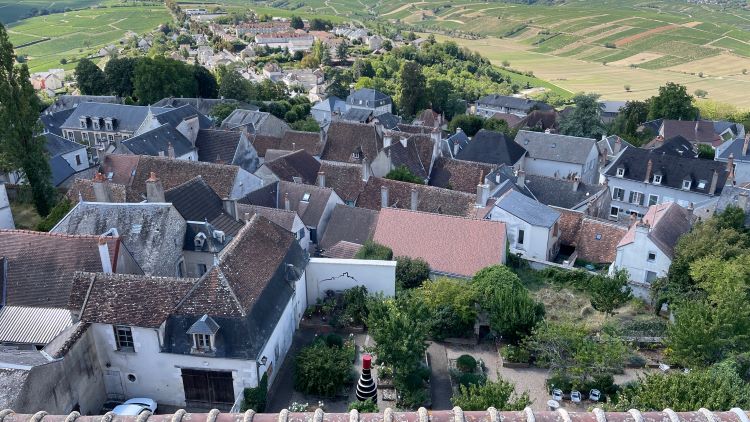
Sancerre, with its pleasant continental climate, is located in the Upper (Centre-Loire) Loire Valley, where the Loire River turns west from Burgundy, just on the other side of the river. Sancerre was one of the first wine regions designated as an AOP in 1936 (Protected Appellation of Origin). There are 14 communes, three hamlets, and about 300 winegrowing families within the 55 square-mile wine region, with over 3,000 acres of vineyards, primarily comprised of chalky limestone, clay and flinty soils. Vines have been planted at least since the 8th century, but the Augustine monks got seriously interested in cultivating vineyards in the 12th century. It was all about the wine, actually!
The left bank village of Sancerre has a lofty hilltop position overlooking its vineyards and surrounding villages. It was formerly a perched and fortified town during the religious wars of the 16th century, and some of the walls are still intact. Sancerre has had recognition and momentum in international markets for many years. Some attribute this to its easy to pronounce name (compared to many other French wine regions), but the quality and consistency of Sancerre wines is indisputable.
Go Wine Tasting in Sancerre
Most Sancerre winegrowers are multi-generation families that grow and produce wine, mostly white wine. They have survived and thrived by collaborating and promoting their region. Freshness, minerality, salinity and finesse are the hallmarks of the wines made in Sancerre, with Sauvignon Blanc being the largest production and most acclaimed. Pinot Noir (including rosé) makes up about 20% of total production.
Drink the Terroir of Sancerre. You’ve heard the French say ‘wine is made in the vineyard?’ These classic white wines are said to transmit their terroir, and the limestone soils that predominate give an affect similar to what you’d expect in Chardonnay from the Chablis region.
The best way to experience all of this is on the ground in Sancerre. You’ll find some designated vineyard or single parcel (block) wines in the region, but it’s less common. Seek out side-by-side tastings of the Sauvignon Blanc grape from the different soil types – limestone, flint (silex), and chalky clay – each showing their signature ethereal expressions of flavor concentration, texture and intensity.
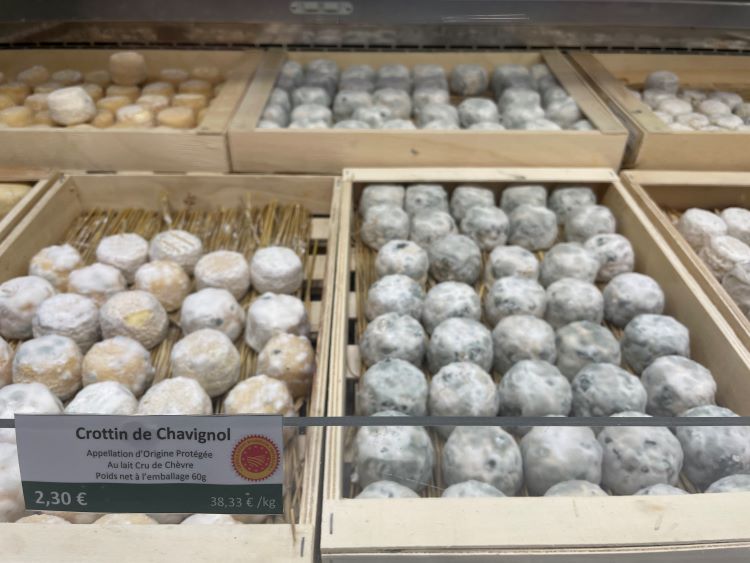
Chavignol Wine & Cheese
Chavignol is one of three hamlets just west and within the Sancerre commune. Four generations of the Bourgeois family have made it their home base, and helped create intense interest in their village. Chavignol takes pride in a Chavignol first, Sancerre second attitude. Join in the jocularity by spending time in the Sancerre town square at the amiable La Taverne du Connétable where you’ll hear more about this from the locals.
Enjoy cheese turds? That’s right Wisconsin, we’re talking turds not curds. The famous cheese of Chavignol is Crottin de Chavignol, which translates to turds of Chavignol. Be sure to have crusty bread in the good Sancerre Blanc on hand when you dig in.
In discussing Sancerre and Sauvignon Blanc wines, it’s important to know that across the river is the village of Pouilly Fumé. It’s the right bank sister AOP of Sancerre. Wines from its flinty soils express savory aromas and even smokiness, i.e. (Fumé). It’s a smaller wine producing area than Sancerre, but keep an eye on this region, as there is much room for growth.
Best Wineries in Sancerre and Tasting Rooms to Visit
Maison des Sancerre
3 Rue du Méridien, 18300 Sancerre, France
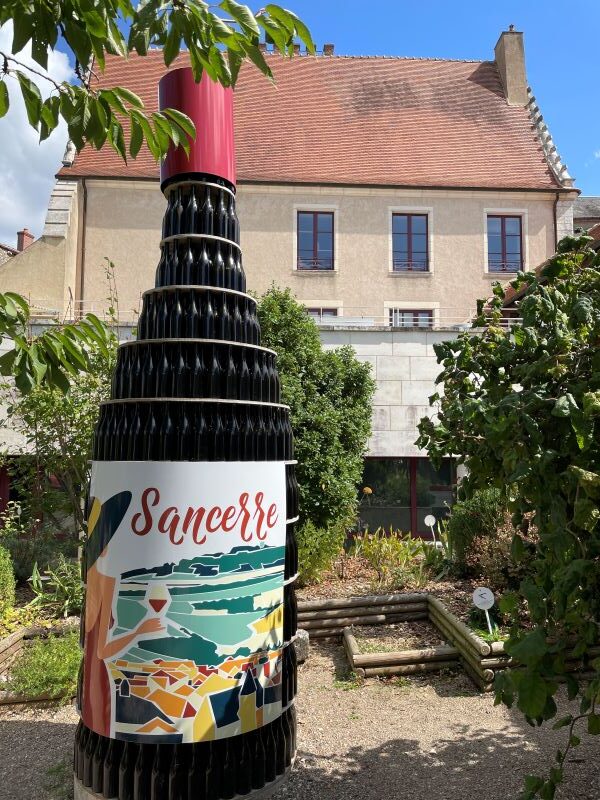
Maison des Sancerre is the definitive place to start your Sancerre wine tour. Become completely oriented in 60-90 minutes in the former 15th century castle now museum, aromatic garden, tasting room, and boutique. It’s all about terroir here, so don’t miss the audio-visual geology display to understand the three different soil types in the region, and the winegrowing history museum. If you and the kids are up for a joyride, try the 4D Cinema (before lunch).
Tours and tastings €5-10. 16 wines are on offer each two months from different producers, and show the three major soil types of the 14 different villages. More than 30% of these wines are organically and biodynamically grown and produced. Also, see the website for special events in spring and summer months. To filter, search and select wineries to visit.
Domaine Henri Bourgeois
18300 Sancerre, France
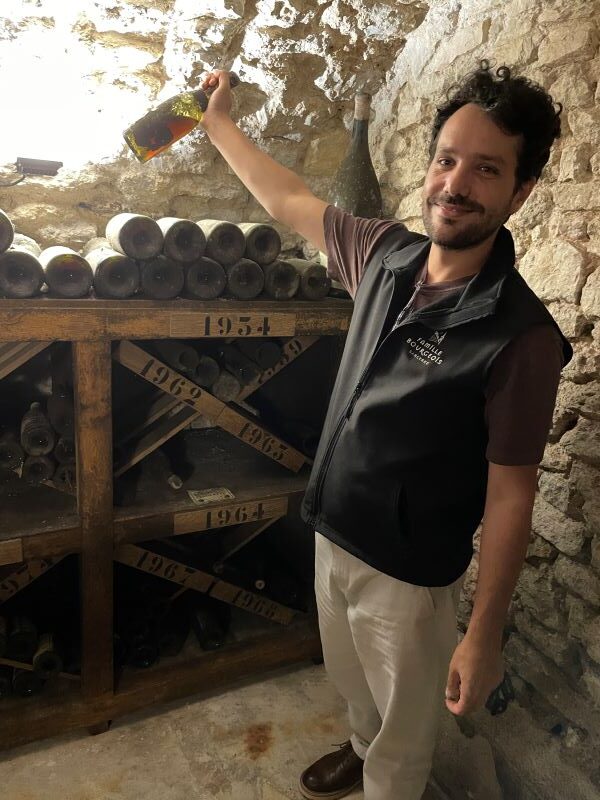
Established in Chavignol in 1935, Henri Bourgeois’ grew up in Sancerre and his family has been making wine here for 10 generations. Domaine Henri Bourgeois is one of the most celebrated wineries in Sancerre, and their consumer retail offerings are quite impressive. According to marketing director Alexandre Vacante, “the Famille Bourgeois is focused on making pure terroir wines,” and they do so from the 72 hectares of vineyards in both Sancerre and Pouilly-Fumé.
Almost all bottlings are terroir blends from vineyards of the same soil types. If you want to learn terroir, this is a great place to do so. The family is so passionate about Sauvignon Blanc and Pinot Noir, and soils, that it purchased property and built the Clos Henri winery in Marlborough, New Zealand.
Note: I visited the sister winery Clos Henri Winery earlier this year. They do similar comparative soil series wine tastings at their tasting room on the South Island of New Zealand.
ALSO READ: South Island New Zealand: Itinerary for Winetravelers
If you’re interested in learning about the region, its history and its soils, the tour is worth taking. You’ll visit one of the vineyards, touch and taste the soils, and check out the underground barrel caves, and working winery facility.
The tasting room opens Monday to Saturday from 10-6p.m., and Sunday 10-12p.m. and 2-6 p.m. There is no charge for tastings. For the complete ‘bourgeois’ experience, I suggest you make an appointment for the €20 vineyard, cave and winery tour, which includes wine tastings with goat cheese pairings.
Domaine Roland Tissier et Fils
Le Petit Morice, 18300 Sancerre, France
Domain Tissier is a wine estate on the opposite end of the spectrum, producing just 70,000 bottles annually (6000 cases). The Tissier family has been around for three generations, originally started by two of the grandfathers. Brothers Florent and Rolland run all operation today, and are fun to meet and taste with. These are low alcohol wines and great for food pairing prices are very approachable.
Tastings are at no charge. Appointments are not required, but are suggested as the brothers maintain a busy schedule. Campers are encouraged with advance appointment, as are large family groups.
Domaine Laporte
Cave de la Cresle – Rte de Sury-en-Vaux, Saint-Satur, France
Domain Laporte is one of the oldest wineries in the Sancerre Valley, established in 1850. It has been under management by Famille Bourgeois since 1986 when founder and elder statesman Rene’ Laporte decided to retire. Alexandre Lassoury is in charge of direct sales and the new tasting room which opened in 2023. He speaks excellent English, and is very knowledgeable. The wines are 100% organic and all soil types are presented in the tasting room. These are great price-value wines to collect.
Tasting room opens daily 10-1pm, and 2-6pm. No charge, no appointments. You’ll taste 5-7 wines.
Domaine Hubert Brochard
18300 Sancerre, France
Domaine Hubert Brochard is a 90-hectare estate that was recently purchased by The Bollinger Group, the famous champagne house. The house is expanding their operations and activities and expects to offer more intimate consumer experiences at the tasting room located in downtown Chavignol. To that end, the talented Eleonore Marty, a native of Carcassonne in the south of France, was recruited to head up wine tourism. Expect to see unique sensory and tasting experiences in the future.
Eleonore has already introduced three different tasting options for visitors. There is the compulsory no charge tasting; a five wine with cheese pairing experience for eight euros; and finally, the option to add a winery tour to all the above for €15 per person.
Domaine Denizot
20 Rte de Sancerre, 18300 Verdigny, France
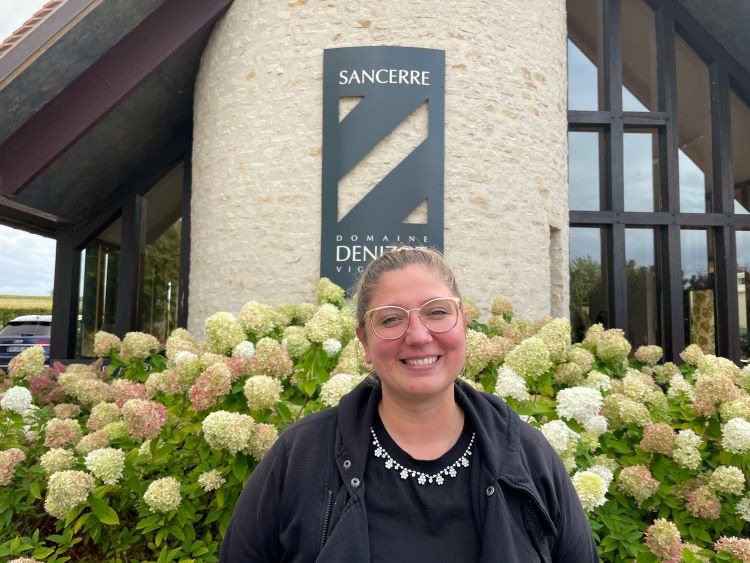
“Z” is for for Denizot! This small 100% organic producer is making a move, and Jenifer Denizot is leading the charge. She and her husband Thibault are the 6th gen owners and managers of the Domaine. They understand the importance of sustainability and also of consumer marketing. They converted the entire estate to organic agriculture in 2016, when they began managing this Verdigny commune winery. Previously, their parents sold in bulk to the local cooperative. Bottle labels tell a story, and these are clever, playful and expressive of grapes sourced from different soils.
This is an appointment only tasting experience available Monday through Saturday. There is no charge and you’ll taste 6-7 wines.
Domaine Fouassier
180 Av. de Verdun, 18300 Sancerre, France
Domaine Fouassier is a 10th generation family run business and mid-size winery in Sancerre. They manage 60 hectares (150 acres) of biodynamically farmed vineyards, and produce 10 different single vineyard Sauvignon Blanc wines. None of their wines see oak, and only stainless tanks and amphorae are used. Owner and young winemaker Benoit Fouassier wants the specific vineyard blocks to be the focus.
What’s unique about this winery? Benoit explains that grandfather Fouassier was a true pioneer in Sancerre and started innovating before the AOC was established. Fouassier ancestors were one of the first to replant on steep slopes in the beginning of the 1900s, and to focus on single parcel or single vineyard wines. He purchased the first tractor in the region in 1950, and was an early proponent of natural versus commercial yeast fermentations.
The tasting room and winery are open Monday through Friday 8 AM to 12 PM and 2 to 5 PM. They also have a tasting room on the main square in Sancerre for easy access. Wine can be purchased from both locations.
Domaine Pascal Jolivet
Rte de Chavignol, 18300 Sancerre, France
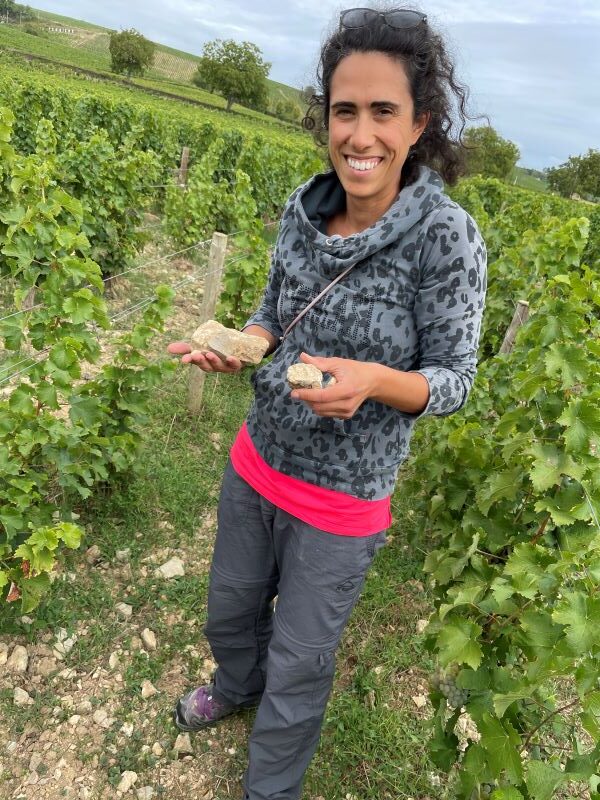
Relative newcomer Pascal Jolivet founded his namesake winery in 1987, and grew it to be one of the largest in the region. They have over 100 hectares under management in Sancerre and Pouilly-Fume’ and produce about 150,000 cases, mostly exported worldwide. This is a huge accomplishment in a region steeped in tradition.
How did Pascal break into the business only 36 years ago? His grandfather was a negotiant – wine businessman – and so is Pascal. Grandpa bought and sold bulk wine, and grandson Pascal decided to start his own brand with a first vintage in 1991. The wines got great scores from Wine Spectator Magazine, and the rest is history.
What’s next for Pascal Jolivet? Son Clement Jolivet and dynamic duo winemakers Valentina Buoso and Riandri Vissier see a bright consumer friendly future focused on next stage sustainable practices and even an onsite restaurant highlighting the regional wine and food experience. This would be a welcome development if they are successful.
Tastings at no charge. Open times are Monday through Friday 1:50 PM and 4 to 6 PM.
Domaine Pierre Martin et Fils
18300 Sancerre, France
Email: domaine.martinetfils@orange.fr
Enthusiastic and jovial, Pierre Martin worked with his father Yves for many years on their 18 hectares (44 acres) of vineyards, from some of the most coveted sites in Chavignol. This is another fifth-generation estate, producing about 1500 cases total of Sauvignon Blanc and Pinot Noir wines. The quality is high and the wines are clean and very typical of the region.
The tasting room is open Monday through Saturday. Be sure to call or email Pierre or his wife Laurianne to make an appointment. They are essentially a two-person family operation and constantly on the run. If Pierre isn’t too busy, he may offer to take you up to the top of Chavignol in his vineyard truck for a vineyard visit. Take him up on that offer. No charge for tastings.
Top Restaurants in the Sancerre Wine Region
Gastronomes Rejoice! The name Sauvignon Blanc is derived from the word “sauvage” meaning “untamed”, so know that these minerally and herbaceous wines can be enjoyed with a surprising variety of foods. The racy acidity of Sancerre wines adds to its appeal for food pairing. These wines work classically with most any seafood, and of course goat cheeses, but also a variety of Asian, Mexican, Lebanese and other spicy cuisines. The age-old adage applies “What grows together goes together”, so buy the local produce, cheeses, meats and seafood knowing you can’t go wrong.
Hotel-Restaurant Famille Bourgeois Chavignol
Place de l’Orme – Chavignol, 18300, Sancerre France
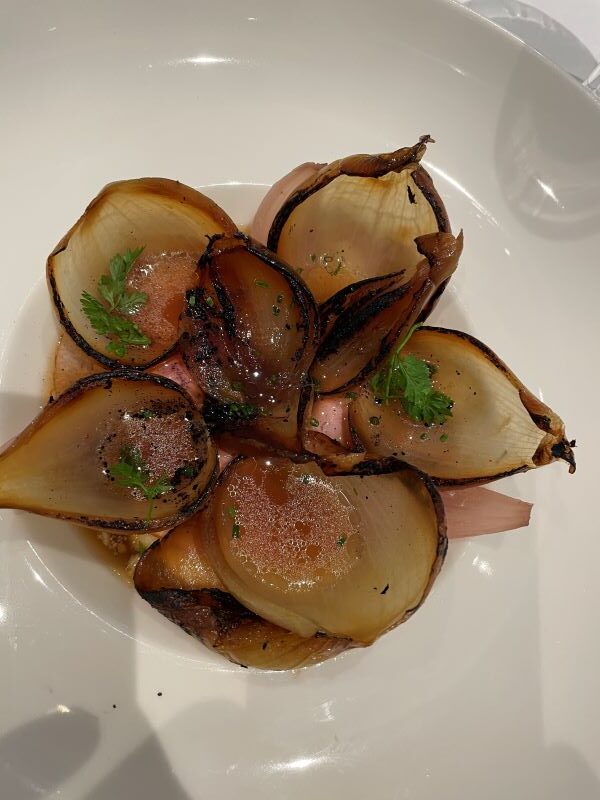
Situated in the village of Chavignol, this fine dining restaurant requires reservations and offers three fixed menu options, and one of the most extensive wine lists in the Loire Valley. Be sure to try the onion soup dish and tartare if available (trust me), and of course the Chavignol cheeses. Open for lunch and dinner Tuesday evening through Saturday evening, and Sunday until noon.
Check availability and consider staying at Hotel-Restaurant Famille Bourgeois
Restaurant La Pomme d’Or
1 Rue de la Panneterie, 18300 Sancerre, France
This gastronomic phoneme restaurant is said to be a candidate for a Michelin star, and the experience proves out. The multi course price fixed menu at La Pomme d’Or is fish focused but integrated into its creative courses.
Other local favorites
- Brasserie Sancerroise
- Casual Bistro: La Taverne du Connétable (Sancerre)
- Trendy & For Wine Lovers: La Petite Maison (Sancerre)
- Momento (Bué)
- La Tour (Sancerre)
- Auberge St-Thibaut (Saint-Satur)
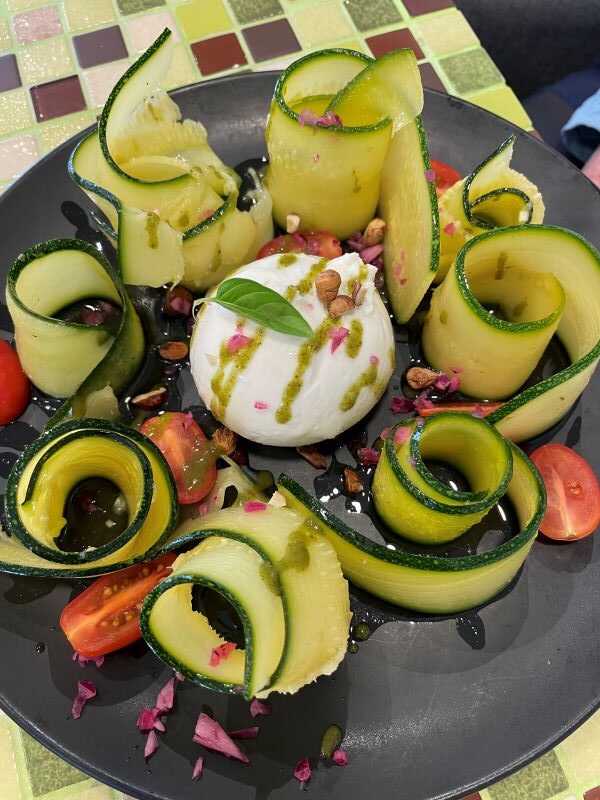
Lunch and Sancerre Wine Bars
Romain Dubois Bar a’ Fromage, Sancerre: This casual wine and cheese bar is located in central Chavignol across from the hotel. Don’t be fooled by its rustic appearance. Enjoy a wonderful bistro lunch menu of fresh vegetables, cheese courses, smoked salmon, terrine, and gourmet chicken and pork dishes.
Fólklore: Gourmet sandwiches at the newest place in Sancerre
Au Bon Laboureur: Restaurant à Menetou-ratel
Le Kilomètre: Restaurant à La Borne (20 min from Sancerre in a potter’s village)
La Banque: Bar à vin à Sancerre
Taste: Bar à Vins à Aancerre
Vignerons la Cave: Cave à vins à Sancerre
Best Hotels in and Near Sancerre
Other lodging options include Chambres d’Hotes (Inns) and Gites de France (rural holiday rentals).
You can also browse additional romantic hotels and BnBs near Sancerre on Tripadvisor.com.
More Top Things to Do Near Sancerre
Walk along the rampart walls of old town in Sancerre for Loire River and vineyard views, and be sure to visit Sancerre Castle near the center of the village. Hiking and biking the hills above the river is a local’s pastime, although e-bikes are recommended and readily available. Swimming in the river during summer months is a great way to cool off if you’ve overheated from winetasting.
RELATED: Visit Some of the Best Loire Valley Wineries & Castles This Year in France
According to Emmanuel Marot, Director of Maison des Sancerre and Wines of Sancerre, “Sancerre is for nature lovers. We are located in a wild area of the Loire River ideal for adventurous visitors. There are major events such as Trail de Sancerre with over 3,000 runners, and Loire by Bike (La Loire a Velo) for long distance cyclists.”
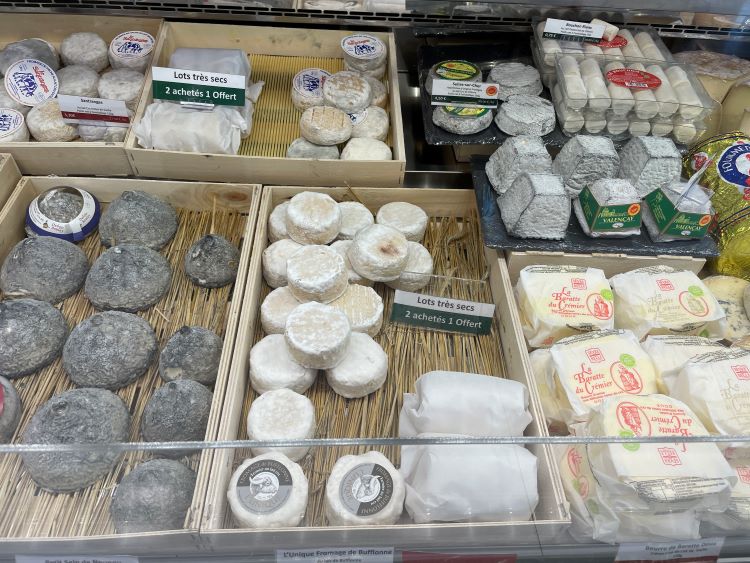
And, don’t miss the Goat Cheese Trail in this area! Get schooled on Goat Cheese in Loire Valley in general, and Crottin de Chavignol specifically, and read this humorous article by Jason Wilson of Everyday Drinking.
The goat cheese shop and bar Romain Dubois is located in front of Hotel Restaurant Chavignol. This is a wonderful place for a light gourmet lunch with a crisp Sancerre Blanc. You can purchase local cheeses here, or at their main location on Sancerre village square. Another option is Dubois-Boulay at the entrance to Chavignol village.
Crottin de Chavignol is the most sought-after goat cheese of the region. Sample the four versions from fresh and young to aged and well, ripe!
Visit More of the Best Wineries and Castles in the Loire Valley
Want to continue your journey in the Loire Valley beyond Sancerre? From the coast of the Atlantic north of Bordeaux, to the southwest of Paris, and spanning all of the way to the center of the country, this region has grown over the centuries and includes more than 6,000 wine producers. Continue reading…
Pin This Article for Later on Pinterest
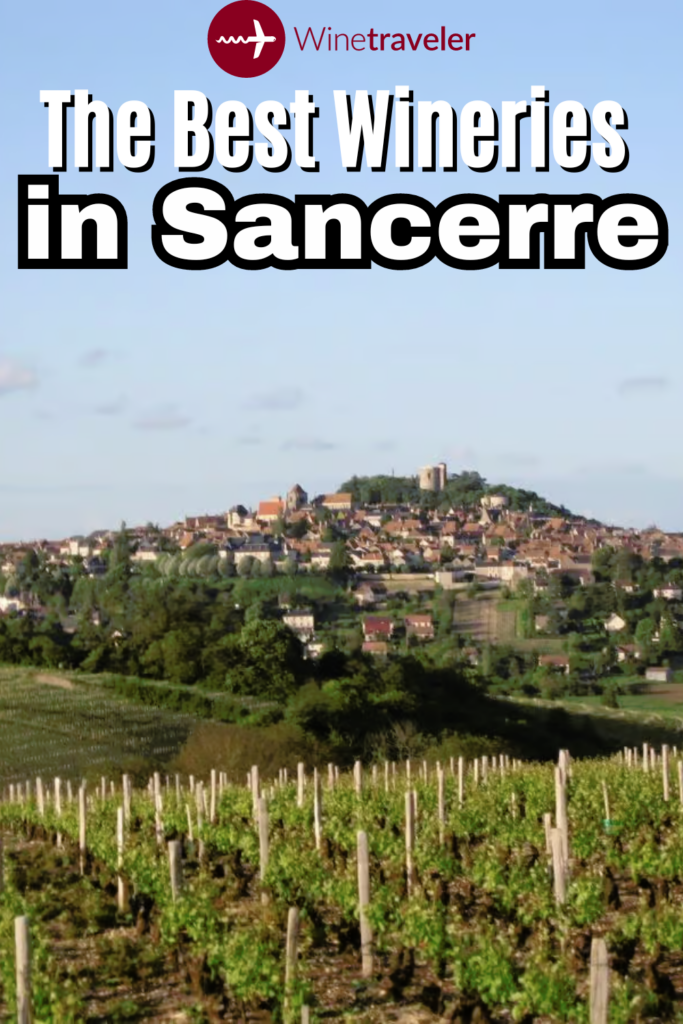
Featured image courtesy Quentin Baudry, Sancerre AOP
You are reading “The Best Sancerre Wineries, Wine Tours & Tasting Experiences“: Back To Top
things to do in Sancerre, wineries near me, wine tours: best French wine regions to visit
If you enjoyed this guide, consider joining the Facebook Group to interact with other Winetravelers and for wine travel inspiration around the world. Be sure to follow us on both Twitter and Instagram to stay up to date with our trending content.
